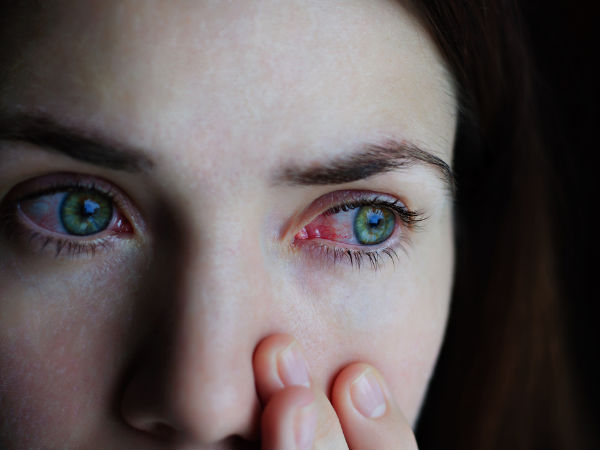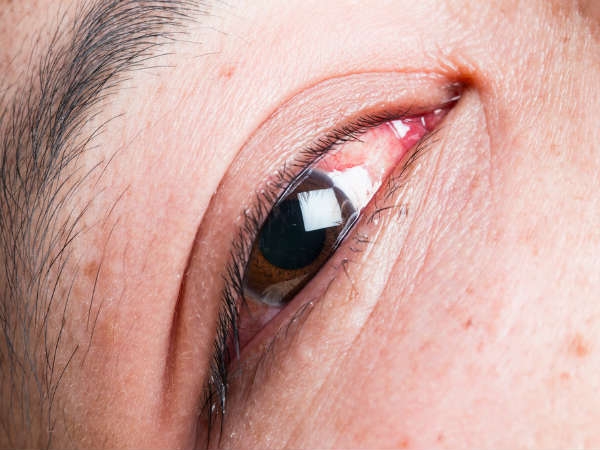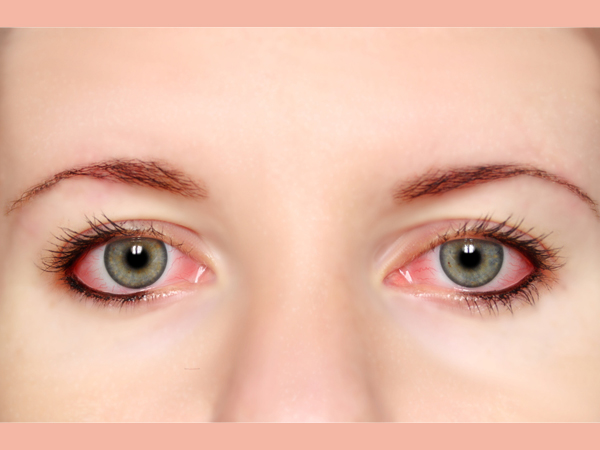Just In
- 3 hrs ago

- 13 hrs ago

- 14 hrs ago

- 18 hrs ago

Don't Miss
- Movies
 Aavesham Box Office Collection: Fahadh's Film Hits ₹100 Crore Club! Discover Other Malayalam Films In The Club
Aavesham Box Office Collection: Fahadh's Film Hits ₹100 Crore Club! Discover Other Malayalam Films In The Club - Finance
 Rs 5/Share Dividend: Record Date On 13th June; Buy The Auto Stock?
Rs 5/Share Dividend: Record Date On 13th June; Buy The Auto Stock? - Automobiles
 Hero Lectro Introduces Muv-e Electric Bike To Transform Delivery Services
Hero Lectro Introduces Muv-e Electric Bike To Transform Delivery Services - Sports
 Most Sixes in IPL Since 2022: Shivam Dube Back on Top in The Big-Hitting Charts After CSK vs LSG in IPL 2024
Most Sixes in IPL Since 2022: Shivam Dube Back on Top in The Big-Hitting Charts After CSK vs LSG in IPL 2024 - Technology
 Apple Confirms Special Event for May 7: iPad Air, iPad Pro 2024 Models Expected
Apple Confirms Special Event for May 7: iPad Air, iPad Pro 2024 Models Expected - News
 Senator Lambie Calls For Elon Musk's Imprisonment Over Wakeley Church Stabbing Posts
Senator Lambie Calls For Elon Musk's Imprisonment Over Wakeley Church Stabbing Posts - Education
 Telangana Inter Manabadi 1st and 2nd Year Results 2024 to be Declared Tomorrow
Telangana Inter Manabadi 1st and 2nd Year Results 2024 to be Declared Tomorrow - Travel
Kurnool's Hidden Gems: A Guide To Exploring India's Lesser-Known Treasures
Conjunctivitis: Causes, Symptoms, Diagnosis & Treatment
Conjunctivitis, commonly known as pink eye, is an inflammation or infection of the conjunctiva. The conjunctiva is a thin membrane that cover the inner surface of the eyelids and part of front surface of the eyes. [1] .
Conjunctivitis cases are being reported in Kolkata, West Bengal due to the extreme summer heat and dust. Cases of highly contagious viral conjunctivitis, allergic conjunctivitis, and seasonal allergic conjunctivitis are on the rise.

What Causes Conjunctivitis
- Bacteria [2]
- Virus
- Reaction to eye drops
- Fungi and parasites
- Allergic reaction to pollen, dust, or smoke [3]
- Chemical irritants caused by shampoos or chlorine found in swimming pools
Conjunctivitis Causes In Newborns [4]
Conjunctivitis is common among newborn babies and it occurs due to irritation, infection, or a blocked tear duct. If it is bacterial conjunctivitis due to Chlamydia, the symptoms appear 5 to 12 days after delivery and if it's due to gonorrhoea, the symptoms show up after 2 to 4 days.
If conjunctivitis occurs due to an eyedrop reaction given at birth, the symptoms appear after 24 to 36 hours.
Symptoms Of Conjunctivitis
- Redness in one or both eyes
- Tears coming out from the eyes
- Itchiness in one or both eyes
- Gritty feeling in your eyes
- A watery discharge in your eyes during the night

Types Of Conjunctivitis
1. Allergic conjunctivitis - It occurs when an allergen comes in contact with the eyes, like pollen, smoke, dust mites, etc.
2. Infective conjunctivitis - It occurs due to a bacteria or virus leading to infection in the eyes.
3. Irritant conjunctivitis - If chemicals or a foreign object irritates the eyes, it causes redness and irritation in the eyes.
Risk Factors Of Conjunctivitis [5]
- Your eyes are exposed to something to which you have an allergy
- Using contact lenses for a long time
- Exposing your eyes to someone infected with viral or bacterial conjunctivitis
Complications Of Conjunctivitis
Conjunctivitis can cause inflammation in the cornea that can affect vision in both children and adults. If you are having blurred vision or feeling something is stuck in the eye, consult a doctor.

Diagnosis Of Conjunctivitis
The doctor will first look at the symptoms and ask some questions. If your symptoms are severe, the doctor will take a sample of the liquid that drains from your eye for tests. Treatment is based on the type of bacteria causing it.
Treatment Of Conjunctivitis
- Bacterial conjunctivitis - If it is bacterial conjunctivitis, antibiotics are prescribed. Adults are given eyedrops and children are given ointments. With the use of antibiotics, the symptoms disappear within a few days.
- Viral conjunctivitis - There is no treatment available and usually the symptoms go away on its own in 7 to 10 days. If viral conjunctivitis is caused by the herpes simplex virus, antiviral medications are prescribed.
- Allergic conjunctivitis - The doctor may give you antihistamine or anti-inflammatory eyedrops that will control allergic reactions and inflammation. Over-the-counter antihistamine medicines including loratadine and diphenhydramine can also help your allergic symptoms.

How To Prevent Conjunctivitis
- Keep your eyes clean.
- Wash your hands frequently with soap and water.
- Keep your eyeglasses clean.
- Don't touch or rub your eyes.
- Change your pillowcase often.
- Don't wear eye make-up or contact lenses of other known people.
- Use goggles in a swimming pool.
- [1] Azari, A. A., & Barney, N. P. (2013). Conjunctivitis: a systematic review of diagnosis and treatment.JAMA,310(16), 1721–1729.
- [2] Epling J. (2012). Bacterial conjunctivitis.BMJ clinical evidence,2012, 0704.
- [3] Rathi, V. M., & Murthy, S. I. (2017). Allergic conjunctivitis.Community eye health,30(99), S7–S10.
- [4] Wadhwani, M., D'souza, P., Jain, R., Dutta, R., Saili, A., & Singh, A. (2011). Conjunctivitis in the newborn-a comparative study.Indian Journal of Pathology and Microbiology,54(2), 254.
- [5] Doğan, Ü., & Ağca, S. (2018). Investigation of possible risk factors in the development of seasonal allergic conjunctivitis.International journal of ophthalmology,11(9), 1508–1513.
-
 pregnancy parentingEye Flu and Breastfeeding: Everything You Need to Know
pregnancy parentingEye Flu and Breastfeeding: Everything You Need to Know -
 healthHow To Know If You Have Eye Flu? Steps To Look For Signs
healthHow To Know If You Have Eye Flu? Steps To Look For Signs -
 healthConjunctivitis Alert: Is Eye Flu Dangerous? Does It Spread By Looking?
healthConjunctivitis Alert: Is Eye Flu Dangerous? Does It Spread By Looking? -
 healthEye Flu Cases Rise In India: 5 Home Remedies To Prevent Conjunctivitis Virus In Monsoon
healthEye Flu Cases Rise In India: 5 Home Remedies To Prevent Conjunctivitis Virus In Monsoon -
 healthEye Flu Cases on Peak: How Long Does Conjunctivitis Last And How To Treat It?
healthEye Flu Cases on Peak: How Long Does Conjunctivitis Last And How To Treat It? -
 healthEye Flu Cases In India: How To Prevent Conjunctivitis In Children? Expert Says
healthEye Flu Cases In India: How To Prevent Conjunctivitis In Children? Expert Says -
 healthEye Flu On The Rise In India: How To Stay Safe?
healthEye Flu On The Rise In India: How To Stay Safe? -
 wellnessConjunctivitis Could Be A New Symptom Of Coronavirus, Here’s What You Need To Know
wellnessConjunctivitis Could Be A New Symptom Of Coronavirus, Here’s What You Need To Know -
 disorders cure9 Home Remedies For Conjunctivitis
disorders cure9 Home Remedies For Conjunctivitis -
 disorders cureEasy Tips To Protect Your Eyes During Monsoon
disorders cureEasy Tips To Protect Your Eyes During Monsoon -
 wellnessConjunctivitis - Symptoms & How To Treat Them Quickly
wellnessConjunctivitis - Symptoms & How To Treat Them Quickly -
 wellnessBeware, Conjunctivitis Is Here
wellnessBeware, Conjunctivitis Is Here


 Click it and Unblock the Notifications
Click it and Unblock the Notifications



